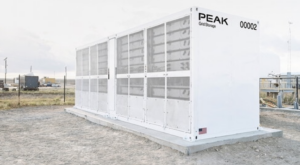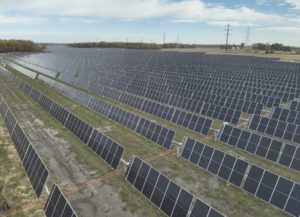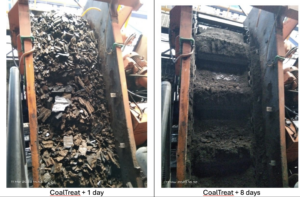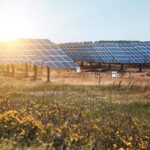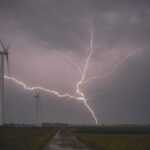Mitigating against the risk of hail for solar projects is both extremely complicated and more straightforward than you may think.
Natural catastrophes (NatCat), particularly hail, pose a significant risk for solar projects and can lead to severe damage with cost impacts for projects and insurers. In this article, we look at the risk that hail poses to solar projects and the measures that can be put in place to help mitigate these.
You could start by making the argument that an estimated maximum loss (EML) for a solar project in an extreme risk location, such as those prone to hail events, would be a full loss. That would, however, most likely mean the lenders would not get comfortable with the project risk and thus it would be unlikely to reach financial close. For solar projects developed in locations that are prone to such events, this represents an additional challenge that needs to be addressed.
NatCat prediction models exist (such as Aon’s Impact Forecasting, and others), which can help to provide insight into the severity and likelihood of such events. However, to improve the understanding of risk, advanced prediction models that consider the effects of climate change and the vulnerability of solar project assets such as solar panels are required. Without such advanced models, the prediction of frequency, severity, and subsequent panel damage is extremely difficult. It will likely take a few more years of iteration and further development before commercial models exist that have been validated against real-world events.
Risks from Hail Increasing
Close to 40% of recent solar claims are related to severe convective storm events, which include hail (Figure 1). While the U.S. has seen the majority of large-scale solar hail losses, Europe has also seen significant insurance losses over the last few years due to hail impact.
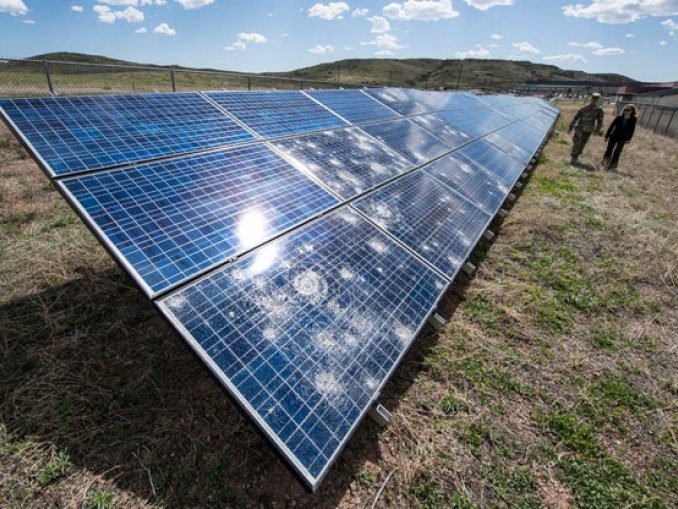
An analysis of statistics from the U.S.’s National Centers for Environmental Information (NCEI), an official center within the National Oceanic and Atmospheric Administration (NOAA), show that 26,359 hail events with a hailstone size of 50 millimeters (mm) or larger have been registered in the U.S. since 1950, with an overall increase in frequency since the start of measurements in 1950, which may or may not be affected by measurement methods. 2011 saw by far the greatest number of registered hailstorms in the dataset, with 1,080 events, and the national trend since then has been declining (the corresponding number for 2022 was 630).
Another key point is that state statistics might differ. A good example is Texas, which has seen a steady upward trend in registered 50-mm hail events and doesn’t see the same dip that has been observed on a national level since 2011. It is important to keep in mind, though, that hailstorms with hailstone size of 50 mm or greater represent less than 10% of all registered hailstorms in the U.S., with the majority being storms with hailstone size of up to 25 mm.
In Europe, data from the European Severe Storms Laboratory (ESSL) showed that 9,627 hail events (with hailstone size equal to or greater than 20 mm) were registered in 2023, of which 1,931 reports included 50-mm hail or greater. Meanwhile, some analysts claim that solar infrastructure in Europe is significantly under-insured.
The datasets from both the U.S. and Europe indicate not only a generally increasing number of hail events with time but also that hailstone size is increasing. Therefore, the risk hail poses for solar projects is not receding and needs careful consideration.
There have been several fairly recent large-scale hail losses in the U.S. that raise questions about the actual hail risk at specific locations. Examples include:
- In 2019, the Midway Solar Project in Texas was hit by a severe hailstorm causing damage of between $70 million and $80 million to the installed solar modules. The site is in a high-hail-risk zone per Swiss Re’s CatNet, corresponding to 4.31 hail days per year with hail greater than 25 mm (where greater than 7 hail days per year is considered extreme). The same location is considered a very-low-risk hail area when analyzed using the Federal Emergency Management Agency’s (FEMA’s) National Hail Index, which is a scale with ratings of Very Low, Relatively Low, Relatively Moderate, Relatively High, Very High, and No Rating.
- In March 2024, the 350-MW Fighting Jays Solar Farm, owned through a joint venture by Copenhagen Infrastructure Partners and AP Solar Holdings LLC, was hit by a hailstorm. The exact extent of the damage is unknown, but initial media reports indicated that 100% of panels would need replacement. Media reports stated hailstone size between golf ball and baseball size with the latter assumed to be in excess of 75 mm. It was noted that there are other solar projects near the Fighting Jays site, presumably Brazoria, Brazoria West, and Cutlass Point, which, while unconfirmed, were believed to have sustained very little damage due to the same hail event.
Recent hail loss events have led to insurers including sub-limits in hail prone areas, and it appears the Fighting Jay solar farm was no different. Insurance Insider recently reported that the policy of the solar farm included a $50M sub-limit. Whether that sub-limit amount will cover the full loss incurred is unclear.
As noted above, neighboring solar projects to Fighting Jays suffered minor damage due to the same hail event. Why was that? Were they located directly along the trajectory of the hailstorm? Was it due to variation in the design specifications of the projects? Was the hail response of the projects (such as mitigation response) different? Or were the projects exposed to different meteorological conditions (for example, the intensity and/or hailstone size) to those experienced at Fighting Jays? Or were the other projects just “lucky”?
Interestingly enough, Swiss Re’s CatNet doesn’t predict extreme risk of hail at the location of the Fighting Jay solar farm, although it should be noted that it is located fairly close to the extreme risk area. CatNet puts Fighting Jays in the moderate/significant-risk zone, with 1.95 hail days per year with a risk of hailstones greater than 25 mm. FM Global, on the other hand, has it in the severe zone with a 15-year mean recurrence interval with hailstone size between 45 mm and 50 mm, and data from FEMA puts Fighting Jays in a relatively-high-risk zone for hail damage.
Current Hail Damage Mitigation Strategies
The actual effect of the hailstorm depends on the size of the hailstones, intensity, probable kinetic energy, the wind direction, impact angle on the solar panel itself, and the project’s own response to an incoming hail event (such as stow, which will be discussed below).
Most solar panels are designed per International Electrotechnical Commission (IEC) 61215 standards and Underwriters Laboratories (UL) 61703 standards. The requirements for hail testing include repeated firing of 25-mm ice balls at the speed of 25 meters per second (m/s). Whilst this might be sufficient for areas that historically have not experienced large (greater than 50 mm) hailstones, it is not sufficient for solar projects located in high-risk areas. Data from the NOAA database for the U.S. show that 68% of all registered hail strikes between 1950 and 2022 include hailstone sizes up to 25 mm. Then again, recent losses, as discussed above, have shown that just because a solar site has never seen large hailstones before, does not necessarily mean that it will not do so in the future, especially with a 25-year lifespan and the impact of climate change.
As noted, the type of solar panel also plays a role in determining its hail resistance. A recent study showed that the number of bus bars within a solar module influences the overall integrity, meaning that mono-crystalline panels inherently have better hail resistance than poly-crystalline.
Solar Panel Glass. One of the key protective measures developers can use when seeking to protect their solar panels is the choice of solar panel glass. In particular, solar panel glass treatment methodology and the glass panel thickness can be key differentials for hail mitigation.
- Glass Panel Finish. Glass strengthening methods such as heat-tempering and heat-strengthening can be used to increase the overall strength and resistance of the glass panel. Chemical-tempering is a possibility also, but is more-costly. In kWh analytics’ Solar Risk Assessment Report, RETC (Renewable Energy Test Center, part of the VDE Group) states that solar modules with tempered glass are approximately twice as resilient to hail impacts as those with heat-strengthened glass. It would appear straightforward, then, that in hail-prone areas, tempered-glass panels should be used to help mitigate the impact effects of hail.
- Glass Panel Thickness. Glass panel thickness plays a significant, if not the most significant, role in the resistance to hail damage. Recent data from the Kiwa PVEL (PV Evolution Labs) 2024 panel scorecard show that while roughly 97% of all tested 2-mm panels failed a 45-mm ice ball impact test, only 13% of the 3.2-mm-thick panels failed the same test. Chakraborty et al. performed hail impact testing of solar panels where the only differing parameter was the thickness. Although the study was somewhat limited, it did clearly show that thicker glass performs better against hail impact.
Hail Stowage. One other possible mitigation effect is to use a solar panel tracking system equipped with a hail stow position. Hail stowage solutions enable the panels to be orientated to a higher angle tilt position relative to the incoming hail, the aim being to convert hail impacts from direct strikes to glancing blows (such as from a high-kinetic-energy impact event to a lower one). Typically stow angles of between 30 degrees and 65 degrees, but possibly up to 75 degrees, are used. In theory, this would significantly reduce the effect the hail impact. However, in reality, that has not always been the case, as discussed below.
Impact of Mitigation Aides
Aon is aware of a study conducted by one leading insurance market in which a variety of damage levels was observed for hail of a similar size and for projects that utilised solar panels with different levels of protective glass thickness and stowage capabilities. Whilst the amount of data was limited, there was no definitive trend observed that linked hailstone size, glass panel thickness, and stowage capability to damage level observed in the field. Thus, the use of treated-glass panels and stowage might be an excellent solution to reduce risk in theory, real-world examples show that there is more involved in adequately protecting panels than just installing these systems.
As noted above, there have been several large-scale losses where the operators had glass panels installed and stowed the system to reduce the effects of the incoming hailstorm. Even so, some of these installations suffered severe damage. There are several explanations as to why this may be the case. Answers to the following questions could help illuminate reasons for the damage:
- Were the stowage systems malfunctioning?
- Were the solar panels stowed in sufficient time?
- Hail is often accompanied with strong wind events; therefore, what is the most appropriate stowage strategy?
- Did the operator stow the panels in the right direction to mitigate the risk of hail strike?
- Did the wind direction and/or speed associated with the hail event change between the panels being put into stow and the weather event occurring?
The above illustrates that to better understand the proper response of solar projects to hail events, a greater understanding and the ability to predict the hazard, that is, the frequency and severity of such events, in addition to understanding the vulnerability of solar projects, that is, the potential damage to the various components installed, for a variety of technical designs is required. Key to all of this is additional data gathering and validation through controlled testing and/or real-world events.
A very important point to keep in mind is that the operability of a stowage system allows us to determine the difference between a probable maximum loss (PML) at the project (stow system fully functions as a protective system) and an estimated maximum loss (EML), in which stowage systems are either not available at all or inoperable.
Predictive Modeling and Analysis
Prediction and mitigation of hail-induced damage to solar panels requires advanced simulations of both the prediction of the hailstorm event, in addition to prediction of the subsequent damage. Catastrophe models for the insurance industry are constantly evolving and are available in both proprietary and commercial forms.
With perils like flood and wildfire being key targets for property, hail is the dominating peril for solar infrastructure. These models are typically based on historical data and advanced modeling to determine future risk for a specific asset location. As with any simulation software, validation is the key, meaning that the accuracy of these models will improve with the amount of data (actual real-world losses) available, which for the moment is somewhat limited. This means that the quality and accuracy of one commercially available tool today might not be significantly different from another, assuming the theory behind the simulations is somewhat similar. Add changing climate to the mix and one can quickly realize that predictions are extremely difficult.
Estimating Losses
Estimating losses is difficult. Hailstorms by their nature are variable, may not strike all the panels, and if they do, it is not a given that all panels will be hit by the largest hailstones, react in the same way, or be struck at the same angle. Whilst the insurance industry is not yet coherent in the actual definition of a maximum loss, at Aon, we use the following definition for EML: The largest, low-probability loss which could be caused by a single occurrence of the peril in question. Reasonably adverse conditions are assumed to exist; fixed protection systems are assumed to be inoperable. Note: Unless there is a very severe exposure, this would not normally include a consideration of natural hazards.
Obviously, in hail-prone regions, the EML will be the result of a natural hazard. This definition does not allow hail stow to be taken into account and would assume that all panels are hit by the highest 1-in-500-year hailstone size. Above a diameter of 80 mm, it can be assumed that most panels would suffer damage and require replacement (assuming the storm is large enough to hit the whole site).
It is usual in the U.S. to take a PML definition instead, Aon’s being: The PML is an estimate of the maximum loss which could be sustained as a result of a single occurrence of the peril in question. This ignores such coincidence and catastrophes as may be possible, but which remain highly improbable. As such, certain protections are assumed to be operable and some responses/interventions to mitigate impacts are considered to occur as per their design intent. This loss estimate is always less than (or in rare cases, equal to) the estimated maximum loss, which assumes the failure of all active protective features.
Here, stow can be considered with it operating as designed.
As noted above, the individual project response to a hail event depends on several different parameters. To an extent, this is reflected in the limited loss record available to date; with some sites suffering significant losses due to hailstorm and others being relatively unscathed, with and without stow. Estimating a PML loss is therefore difficult with the insured wanting sufficient cover but not to be over-insured.
The Best Strategy for Now
To conclude, today there is no silver bullet for solving hail risk for solar projects. However, one clear mitigation strategy to significantly reduce the risk of hail damage to your solar asset if it is in a hail-prone area is to use panel glass thickness of at least 4 mm.
For loss modeling scenarios, PML versus EML, there is benefit (reduction of risk) from the use of stowage systems. However, increased understanding on stowage operational policies and additional sources of independently validated publicly available data are required to support this.
—Andreas Fabricius is a senior risk control consultant with Aon Global Risk Consulting Services (AGRC), Natural Resources for the Europe, Middle East, and Africa (EMEA) region; Lorraine Monaghan is a risk engineer with Aon Global Risk Consulting Services (AGRC), Natural Resources Engineering; and Brian Allen is a senior risk engineer with Aon Global Risk Consulting Services (AGRC), Natural Resources Engineering.


